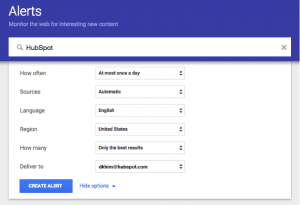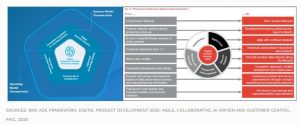In the business world, things tend to come and go. There are trends, which ebb and flow fairly quickly and there are practices, which usually have more staying power, until there is some form of evidence to demonstrate value in revamping the practice. When it comes to knowledge management, there are some aspects that fall somewhere in between trend and practice, but the value of solidifying the knowledge management workflow in today’s professional atmosphere means understanding why the practices and trends need to shift. As we’ve noted before, the dominant form of knowledge management, historically, has fallen to the supply-side of knowledge management. Taking into account several factors, this dominant practice is in need of a re-shifting for the following five reasons:
1. The technology is better.
Before the Digital Era, tracking, documenting and retrieving shared knowledge was somewhat of a headache. It required manual action at each step of the way, often leaving employees feeling as though it was simply another piece of the job, with very little reward to show for the extra work. Now, with the growth of voice-to-text technology, as well as the vastly increased accessibility to the digital community, there are more streamlined ways to incorporate demand-side knowledge sharing into the professional setting.
2. Collaboration is valued more than ever before.
Supply-side knowledge sharing was overly dependent on a top-down model to satisfy the needs of the company. But as the technology has matured, the need for collaboration has matured along with it. Siloed operations or relying on company leaders to supply knowledge or ideas has opened up into a system that values the input from team members across the board.
3. New knowledge is driving industry shifts.
Because supply-side knowledge management relies on a model that ensures that knowledge is supplied to the right people when needed, there was little need to develop new knowledge. The status quo was sufficient. Now, with the sheer amount of data and information available, curious minds are questioning norms and looking for new information, prizing the creation of this new information equally with existing knowledge, and that new knowledge is a driving power behind some of the industry shifts, both technologically and philosophically.
4. Company leaders support knowledge sharing.
Organization leaders often have the unenviable task of attempting to harness and manage knowledge from employees who fear that if they share their knowledge, they make themselves disposable to the company. But as these organizations have begun to value collaboration and new knowledge creation, leadership teams have begun to fully support demand-side knowledge creation, allowing employees to feel less threatened by any knowledge sharing they may do.
5. The marketplace demands it.
Social media, constant connectivity, review sites – these outlets for employee feedback never used to exist, so companies could handle business practices in relative isolation. Today, the sharing of workplace environments, benefits, leadership styles, etc., can be found for just about any company with an online presence. Employees now have a greater ability to look for companies that better fit their needs, a shift that has brought the playing field to a more level position. Companies that do not support collaboration, knowledge sharing, creativity or individual value can quickly become an undesirable place for not only prospective job seekers, but existing talent.
The supply-side vs. demand-side conversation is happening at many organizational levels, and the truth is, there is a place for both practices as the situation calls. However, many of the “traditional” tenets of supply-side knowledge management have become outdated, and supplementing the practice with the innovative demand-side knowledge management practices could make all the difference throughout an organization.
Business & Finance Articles on Business 2 Community(63)
Report Post





